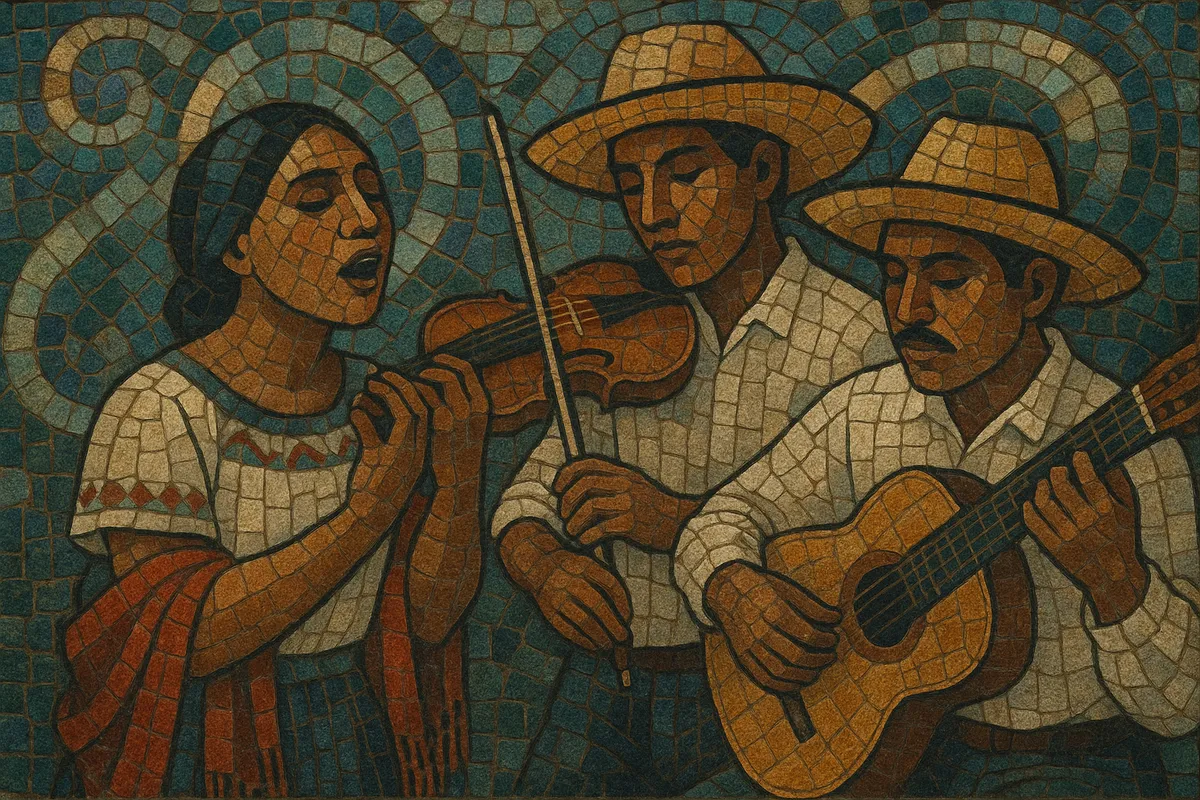Pirekua is a traditional, lyrical song form of the P’urhépecha (Purépecha) people from the state of Michoacán, Mexico. Typically sung by a pireri (singer) as a solo, duet, or choir, it is accompanied by local string ensembles—most commonly guitars and violins, and at times harp or regional string orchestras.
Characterized by gentle, flowing melodies in triple meter (often 3/4 or 6/8) and simple, consonant harmonies, pirekua blends indigenous vocal aesthetics with European-influenced forms such as waltz and church hymnody. Texts appear in the P’urhépecha language, Spanish, or both, and frequently explore love, community, nature, spirituality, and social reflection.
In 2010, UNESCO recognized the Pirekua as part of the Intangible Cultural Heritage of Humanity, underscoring its communal transmission, ceremonial roles, and cultural identity within the P’urhépecha world.
Pirekua (literally “song” in P’urhépecha) took shape among the P’urhépecha people of Michoacán during the colonial and early national periods, when European musical practices—especially church polyphony, hymnody, and dance forms like the waltz and polka—encountered local vocal and poetic traditions. The result was a hybrid song style with indigenous melodic sensibilities, performed in native language and Spanish, and supported by evolving local string ensembles.
By the 19th century, pirekua had stabilized as a recognizable lyrical form: moderate tempos, triple meters, and clear strophic structures with refrain-like sections became common. Community ensembles (orquestas de cuerdas) and family-based groups spread the repertoire at fiestas, civic gatherings, religious celebrations, and serenades. The role of the pireri (singer-composer) became central to composing, transmitting, and performing songs, often tailored to specific towns and occasions.
Throughout the 20th and 21st centuries, pirekua remained a living, community-centered tradition across the P’urhépecha plateau (e.g., Paracho, Uruapan, Tzintzuntzan, Santa Fe de la Laguna). Local competitions, festivals, and radio recordings helped safeguard the style. In 2010, UNESCO inscribed the Pirekua on the Representative List of the Intangible Cultural Heritage of Humanity, highlighting both its cultural significance and the vitality of its oral transmission. Today, pirekua continues to be taught within families and community ensembles, performed at ceremonies and public events, and recorded by regional groups dedicated to P’urhépecha culture.


